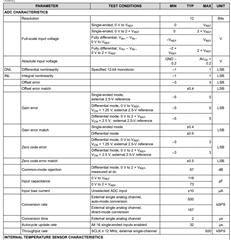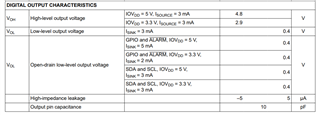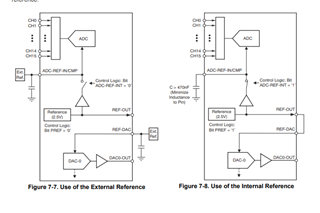Tool/software:
Hello,
I have a few technical queries regarding the usage of your ADC device:
-
Are the error values mentioned in the datasheet (such as INL, DNL, and offset) characterized using the internal or external voltage reference?
-
What would be the expected ENOB when using:
-
The internal reference, and
-
An external 2.5V ±0.05% reference?
-
-
If I do not plan to use the DAC functionality, can I leave the AVcc pin floating, or does it need to be tied to a specific potential?
-
The device includes two remote temperature sensing channels. Is it possible to use them as general-purpose differential ADC inputs? Additionally, can they be used for interfacing a thermocouple?




